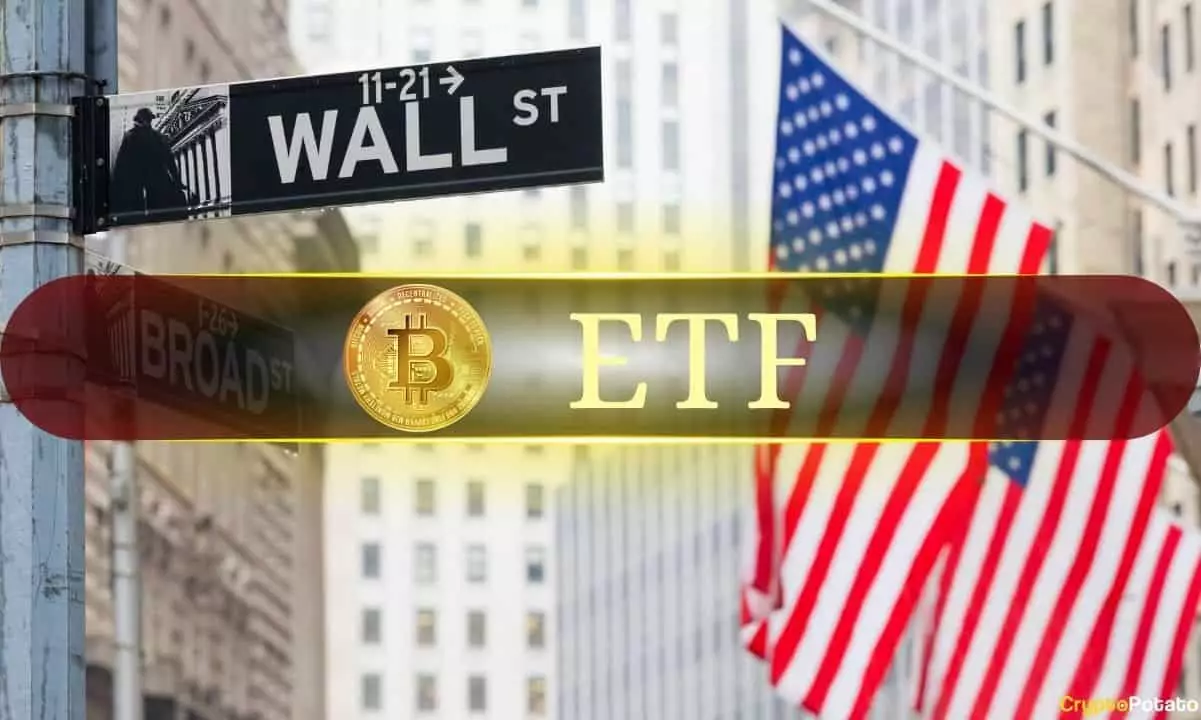In recent months, the market for Bitcoin exchange-traded funds (ETFs) in the United States has experienced a staggering decline in demand. Once viewed as a promising investment opportunity, these financial instruments now reflect a stark change in investor sentiment. The statistics from FarSide illustrate a concerning narrative for Bitcoin ETFs, especially as February unfolds with net withdrawals dominating the landscape. This article investigates the roots of this trend, examining the fluctuating behavior of investors and the broader market factors influencing their decisions.
The launch of eleven spot Bitcoin ETFs in January created a temporary surge of enthusiasm among investors. Many were eager to redirect their investments from the Grayscale Trust to the newly established funds, capitalizing on what seemed like a burgeoning acceptance of Bitcoin in traditional financial markets. Notably, institutions such as BlackRock and Fidelity attracted significant inflows, showcasing a strong initial confidence in Bitcoin’s trajectory. However, the exuberance was short-lived, characterized by a lack of sustained momentum as summer approached, leading to a more subdued market period.
The volatility in Bitcoin ETF investment traces back to several intertwined factors, including political developments and economic uncertainties. Specifically, investor confidence took a hit following the US elections, which marked a potential shift towards a more favorable regulatory framework for cryptocurrencies. However, the public’s growing concerns regarding President Trump’s contentious positions on tariffs and international conflicts, particularly the war in Ukraine, contributed to a prevailing bear sentiment towards crypto assets. As geopolitical tensions rose, investors’ bullishness waned, reflected in the diminishing inflows into Bitcoin ETFs.
Traditionally a prosperous time for Bitcoin, February 2025 has starkly contradicted expectations. The current month has witnessed alarmingly low net inflows, with only a few select days showing any positive performance. The withdrawals have hit an unprecedented level, particularly highlighted by the staggering $364.8 million outflow recorded on February 20 alone. Noteworthy is the response from IBIT, the world’s largest Bitcoin ETF, which itself faced a $112 million depletion in assets. The cumulative figure since February 6 stands at an astonishing $1.1 billion in net outflows, marking this month as the most significant downturn since the inception of Bitcoin ETFs.
While not as detrimental as Bitcoin’s plight, Ethereum ETFs are also feeling the effects of market trepidation. Despite recent periods of net inflows, recent withdrawals totaling $22 million over two consecutive days have demonstrated a shift in investor confidence. After peaking with a $307.8 million inflow on February 4, the surrounding atmosphere has cooled significantly, with performance covering little more than the bare minimum in terms of investor interest.
The current trends in Bitcoin ETFs reveal more than just numbers; they mirror the disquiet in the investor community regarding Bitcoin and its future. The volatility stemming from external political events, coupled with a broader economic context marked by uncertainty, presents a challenging landscape for crypto assets. Investors seeking to explore Bitcoin ETFs must now navigate a changing atmosphere where previous enthusiasm has been eclipsed by caution. Going forward, it remains to be seen whether major regulators will offer clarity and support for cryptocurrencies, which could very well shape the trajectory of Bitcoin and Ethereum ETFs — and whether investors will return to these once-promising financial instruments. The road ahead seems convoluted, yet somehow, the crypto community continues to speculate on a potential resurgence of interest. However, as it stands, February has proven to be a test of patience and perseverance for those placing bets in the volatile realm of cryptocurrency investment.


Leave a Reply